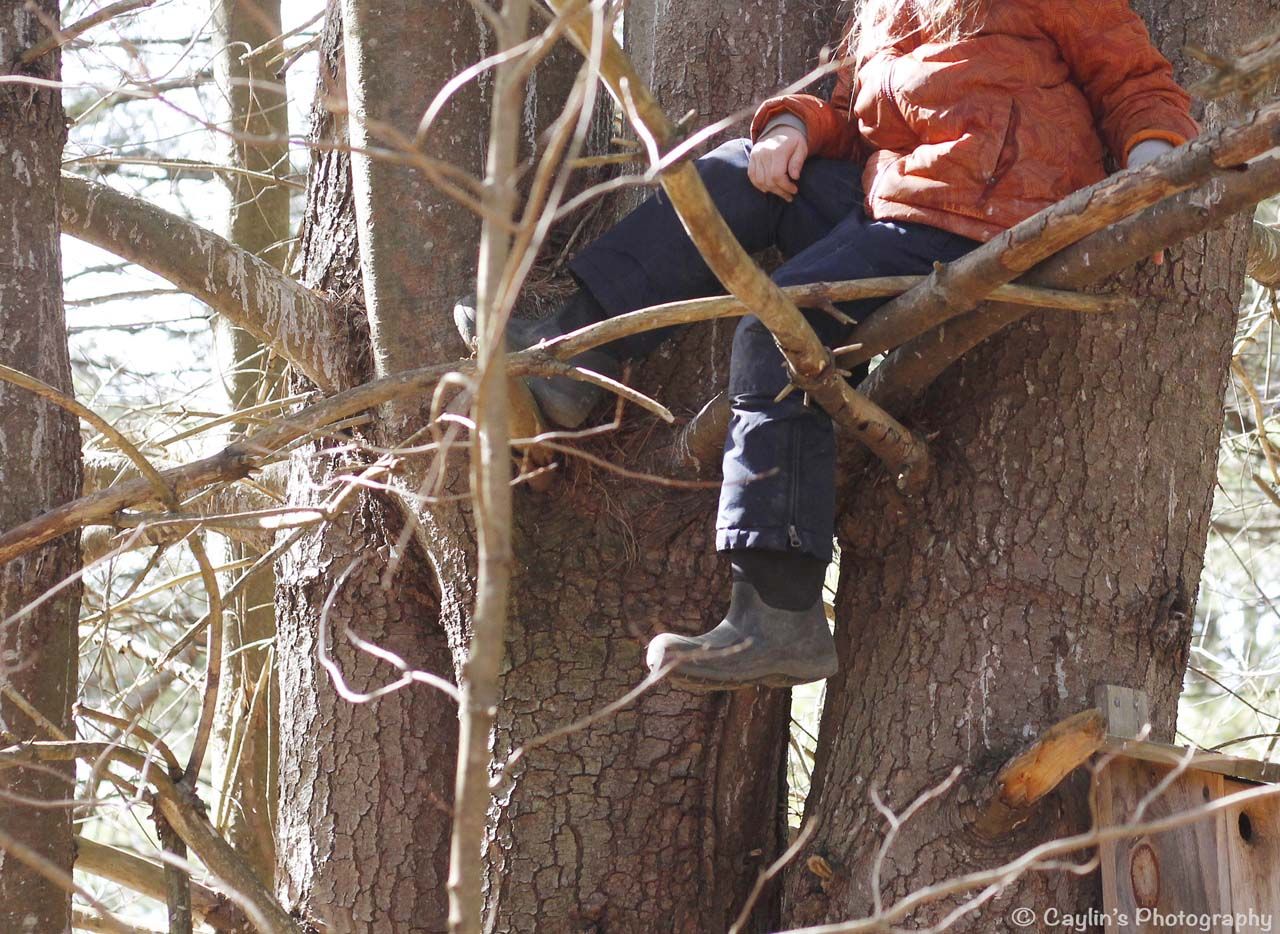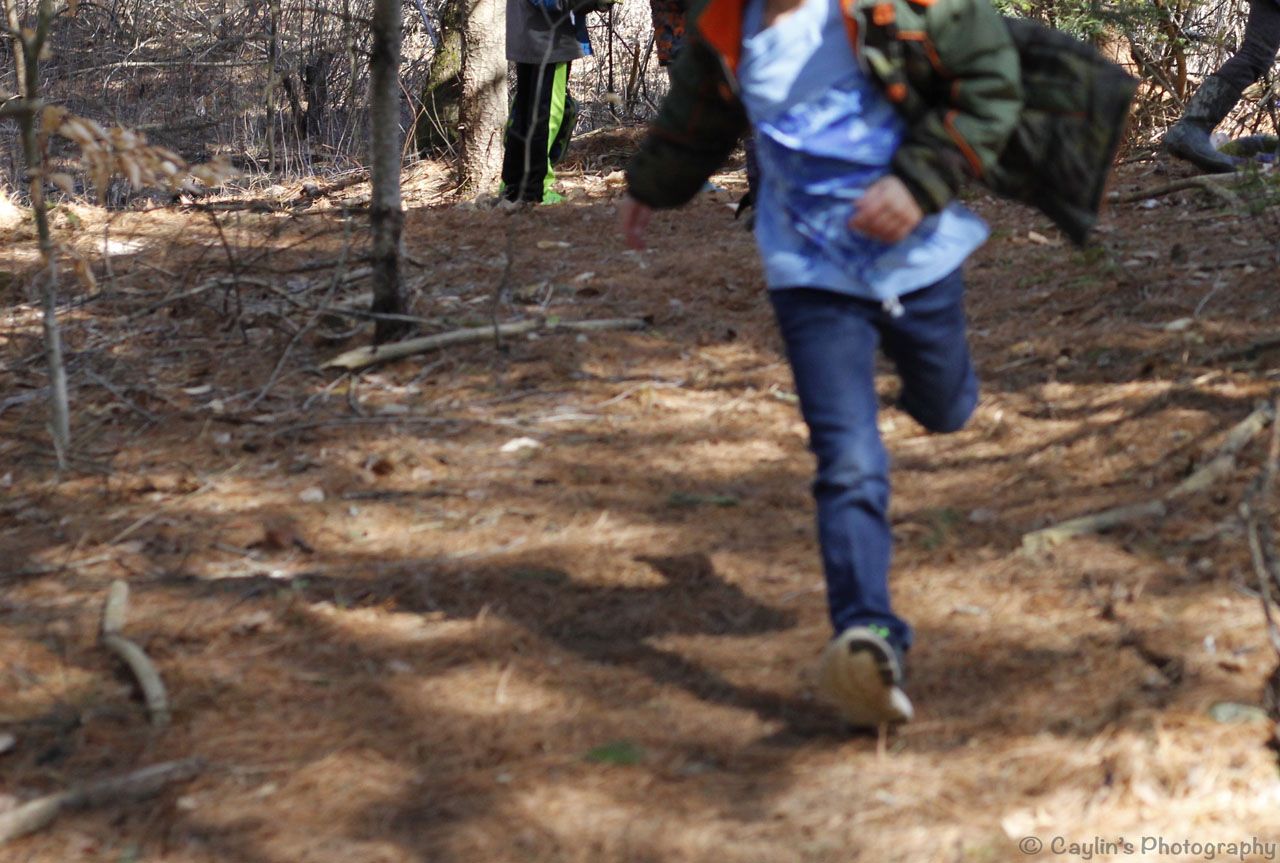
Blog
Stories from my personal journey learning about and delivering Nature-rooted programs across three different countries
Children's risky play and experiencing 'scary-funny'
Caylin (Forest Schooled)

Empty space, drag to resize
The other day at Forest School a five year old named Ryan approached me with tears in his eyes. He was calm, but also clearly upset. He proceeded to tell me what had happened that had brought him to tears:
"I was trying to climb that hill over there, but then I slipped. I slid down and then I hit a tree."
Ryan then pointed to his leg where in his mind was probably a huge wound, but all I could see was a tiny scrape. No blood and barely a bump. I thought the experience had probably scared him more than hurt him and as I attended to his "wound" by covering it with a small bandage we talked about it about more.
He said, "At first it was really fun. I liked sliding down, but then it got scary by the tree."
I asked Ryan, "Would you do anything different next time so it wouldn't be so scary?"
He replied, "Not go so high up the hill and look out for trees."
My brief conversation with Ryan was a good demonstration of a child's relationship to play that comes with inherent risk (such as climbing and sliding down a steep hill). Children seek out opportunities for taking risks all the time and there are often adults present that quash them right away.
"Put down that stick, it could poke your eye out!"
"That's too high, come down from there!"
Our intentions to keep them safe could be considered admirable, but the unintended consequences are that children are restricted from a whole host of developmental opportunities, including learning to assess risk for themselves.
I recently came across the work of Ellen Sandseter whose research into children's risky play is so informative. Rather than focusing on adult perspectives of risk in children's play, Sandseter (2010) took a different approach by investigating children's perspectives. Through observations and interviews with children and staff, Sandseter's research identified six main categories of risk play:
- play with great heights - danger of injury from falling
- play with high speed - uncontrolled speed and pace that can lead to collision with something (or someone)
- play with dangerous tools - that can lead to injuries
- play near dangerous elements - where you can fall into or from something
- rough-and-tumble play - where the children can harm each other
- play where the children can "disappear"/get lost (p.8)
The research also looked into how children express their experiences of risky play:
"Children's experiences of engaging in risky play range from pure exhilaration and fear at the same time (exhilaration bordering fear), to pure fear. Interestingly, the results indicated that experiencing exhilaration and fear at the same time was the primary goal of engagement in risky play... It is the feeling of being on the edge, balancing between the pleasant emotions and the unpleasant emotions, that rewards the child with the most intense pleasure and excitement" (Sandseter, 2010, p. 9)

In my mind, this description of risky play fits Ryan's experience with the hill and the tree almost perfectly. At first he found that sliding down the hill (risky play category 2: play with high speed) was "really fun", then it got a little scary, until eventually fear became the dominant emotion when he actually slid into the tree. Ryan had experienced the spectrum of exhilaration and fear that had tipped a little too far over into fear. But he'd learned from it and he was able to decide how he would keep himself from tipping too far into fear again in the future. That is what Sandseter describes as a balance:
"The important thing for the children is to manage this balance so that they do not switch to pure fear. Several of the children in this study called this balance "scary-funny" - an expression that clearly describes the ambiguity they experience in these kinds of play" (Sandseter, 2010, p. 100)
I really resonate with "scary-funny" as an emotional goal during children's risky play. Often in play, we tend to focus on the "fun" part and, indeed, the concept of "play" is often synonymously interchanged with the word "fun".
But what if we challenge this notion and align ourselves more with an aim to allow challenges and stimulation that sometimes can feel a bit scary too? What if we associated "learning" as the synonym for "play" instead of "fun"? Engaging in risky play allows children to learn about their own bodies, about their own abilities and those of outside forces too; it allows them to make adjustments, experiment, and problem solve; and it allows them the opportunity to explore sometimes strong and overwhelming emotions and learn how to cope with and manage them.
So perhaps we should be explicitly trying to find ways to give children the chance to experience Sandseter's six types of risky play, rather than trying to avoid them.
Safety is of course important AND I'm also inclined to think that my job is so much more than just keeping children safe, only experiencing the funny.... it's also about supporting them in finding both exhilaration and fear and enabling them to find ways to manage the balance between those two for themselves.
References:
Sandseter, E. B. H. (2010). Scaryfunny: A Qualitative Study of Risk Play Among Preschool Children (Thesis). Norwegian University of Science and Technology, Trondheim.
More Posts
WANT TO GET FOREST SCHOOLED TOO?
Subscribe to my email letters, something special from me to you so we can learn together. Each one is filled with heart-felt stories from the forest, resources you may find useful, and things that hopefully bring a smile too.
Thank you!
© by FOREST SCHOOLED
